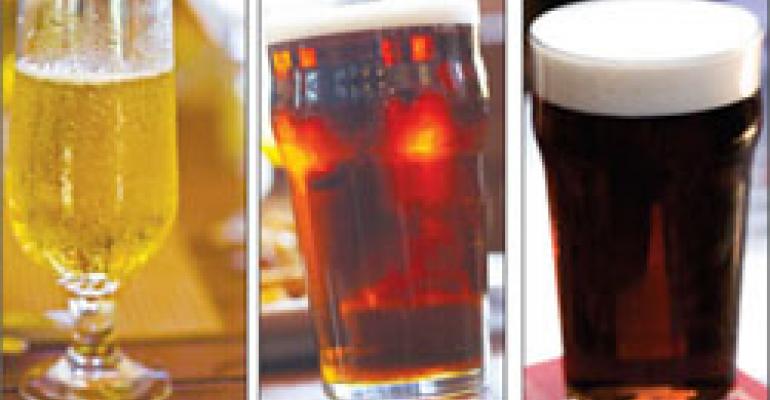North American beer drinkers are better educated today about their beverage of choice than perhaps ever before, thanks in large part to the efforts of enlightened breweries, both big and small as well as a growing community of bars and restaurants specializing in beer. Despite this, however, certain misconceptions about beer continue to show surprising tenacity in their perseverance.
As a service to those who are tasked with serving beers in their daily lives, here are some of the most persistent beer myths:
Myth #1: Dark beer is heavy Except for fruit beers, a beer’s color comes purely from the grain used in its creation, with darker beers containing more toasted or roasted barley malt and paler beers containing fewer or no darker malts. None of this has any bearing on weight or strength. Myth #2: Ale is stronger than lager Alcohol comes from the amount of sugars provided for fermentation and has nothing to do with whether that fermentation takes place at warmer temperatures, as with ales, or cooler ones, as with lagers. In fact, some of the world’s classic styles of ale, such as British-style ales that are best bitter and mild, are also among the weakest in strength. Myth #3: Beer makes you fat Inactivity and bad diet make you fat. Beer, when enjoyed in moderation and as part of balanced lifestyle, doesn’t. Myth #4: Stout is a “meal in a glass” Because it is dark of hue, people expect dry stouts to contain more “stuff” and thus to be more filling. The truth is that stout gets its color from the kind of malts used, not the amount of them. (See Myth #1.) Myth #5: Imported beer is better than domestic beer Brewing today happens almost everywhere it’s legal, and both traditional brewing nations and new arrivals boast breweries of varying qualities. Just because a beer travels a great distance does not mean it will be any better than what’s brewed down the road, or vice versa. Myth #6: Wine is more complex than beer Wine is generally made from a single ingredient–grapes. Beer is crafted from a minimum of four ingredients–malted barley, hops, water and yeast–and sometimes many more. So how is it that beer could possibly be less complex in character? Myth #7: Fruit beers are “girly beers” Hops have only been widely used in brewing for 1,000 to 1,200 years, prior to which beer was flavored with a wide variety of spices, herbs and, yes, fruits. Archaeological research has shown that King Tut drank fruit beer, and that guy was hardly “girly.” Myth #8: Ales are necessarily better than lagers Modern beer snobs often deride lagers at the expense of ales, but the reality is that a well-made pilsner or bock can be every bit as satisfying and complex as any Belgian ale or barleywine. Myth #9: All beer is best served ice-cold Yes, certain beers, including pilsners, most wheat beers and some blonde ales, are meant to be presented cold, but others, including stronger ales such as “double” IPAs and Imperial stouts, are best served at a relatively warmer cellar temperature of about 55 degrees Fahrenheit. A general rule to follow is the stronger the beer, the higher the temperature at which it should be served. Myth #10: Beer and fine dining don’t mix With its wealth of flavors and finely nuanced characters, the world of beer has a style to pair with any food, from the common to the extravagant.

